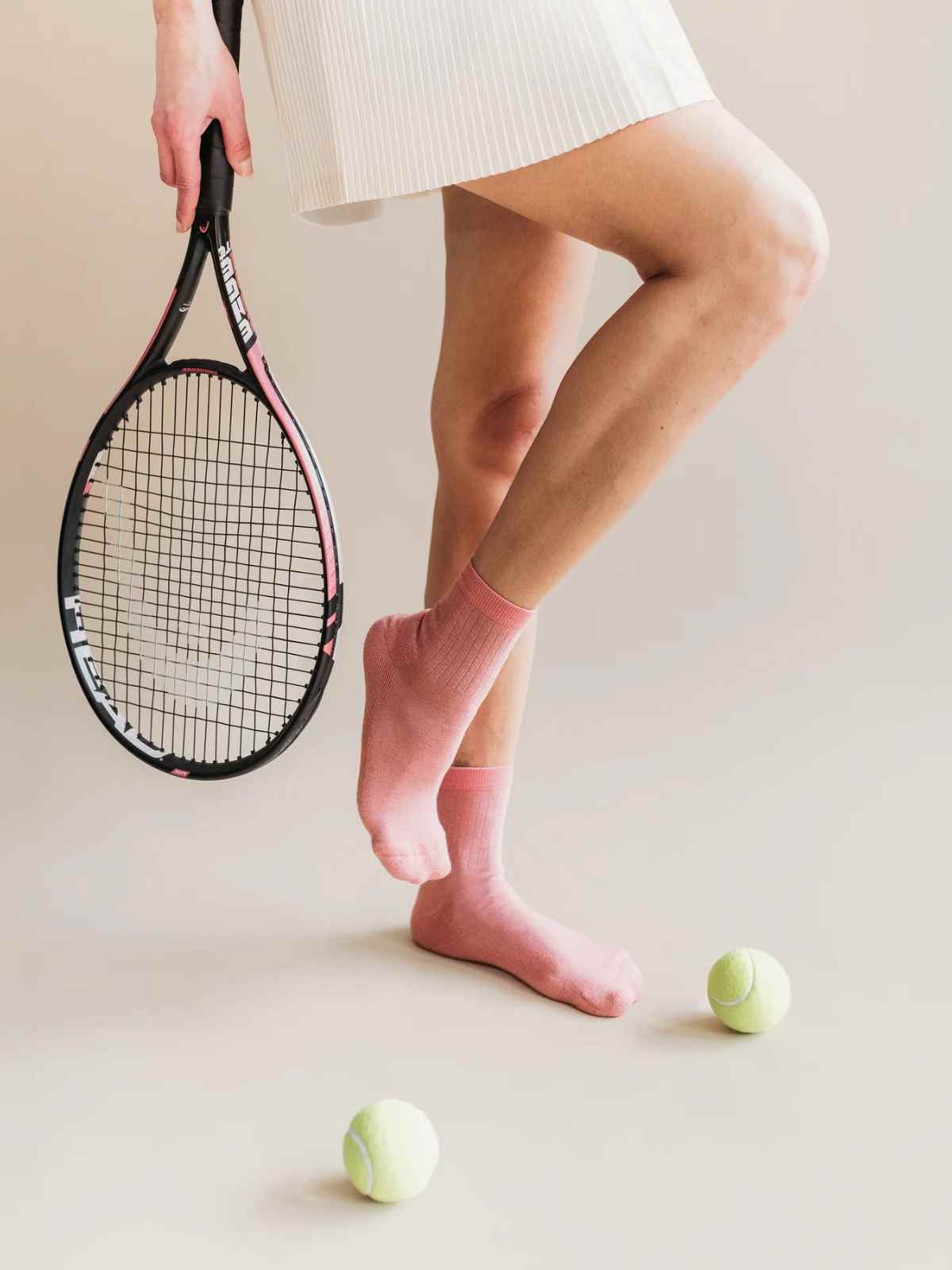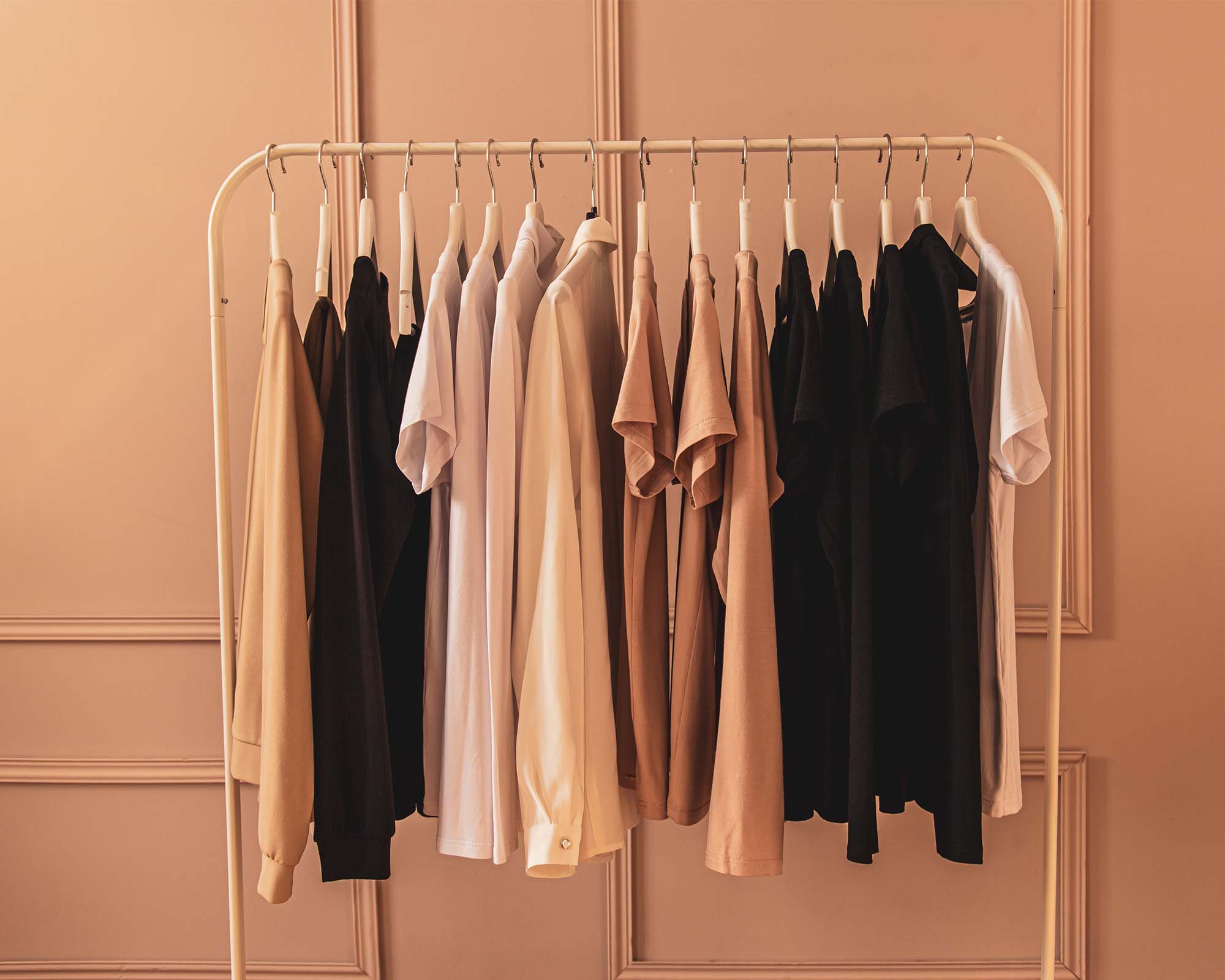Selling your used clothes is a great way to give your garments a new lease on life and can be a source of extra cash. Whatever your reasons, here are our tips for selling your old clothes.
The ultimate guide to selling used clothes, online and offline
Whether you have an overflowing wardrobe, buyer’s guilt over too many brand-new-with-tags pieces, are switching to a capsule wardrobe, or simply have a stack of clothes you’ve fallen out of love with, you may be wondering where to sell used clothes and how to navigate the slew of online used clothes marketplaces like a pro.
Whatever your reasons for selling, there’s a sustainable upside to selling your used clothes, too—it isn’t just about clearing space; it’s a powerful way to contribute to a more sustainable future. The fashion industry’s environmental impact is significant. According to the waste-busting charity WRAP, an estimated £140m worth of clothing goes into landfill in the UK alone each year. By choosing to sell your pre-loved garments, you’re actively reducing textile waste and promoting a circular economy. Every item you sell gets a new lease on life and stays out of landfill far longer, helping to conserve resources and minimise your carbon footprint.
Tips for selling used clothes online
What will sell and for how much?
As you sort through your old clothes, look up listings for similar pre-loved pieces, whether they’ve recently sold, and the price range. Beyond brand and condition, consider factors like the original price, material quality, and market demand. This will help you decide what’s appealing to used clothing buyers, and what starting price to ask for. You can always upcycle, recycle, or donate clothes that won’t sell or aren’t in good enough condition.
Think seasonally, too. Although there’s no harm in listings for bikinis during the winter or knitwear in summer, place the more seasonal items at the top of your profile, so shoppers scouring for on-trend, in-season pieces see those first.
Make your photos count
Do your clothes justice and boost your chances of a sale with great photos. A few in front of a clutter-free background, either flay lay style or on a hanger, and one of you wearing the item works perfectly. Never underestimate the power of good lighting (always shoot in natural daylight if you can), and become best friends with your iron or steamer.
For items that are suitable for accessorising or styling, consider showcasing them in a way that helps buyers envision how they can be incorporated into outfits. This can inspire potential buyers and provide a more personalised shopping experience.
Be honest
Although you want to be enthusiastic and descriptive, that “about the item” text box needs to be truthful, too. Give accurate details, including any defects—no matter how small—and where on the brand-new-to-very-used scale it falls. People buy things that aren’t in perfect condition all the time if the price is right, and honesty will help you build a trusted reputation, so resist glossing over any little faults.
Encourage care
In your listings, encourage buyers to care for their purchases to extend their lifespan. Include tips on proper washing, storage, and maintenance to help buyers enjoy their new-to-them items for longer. This is especially important if you have removed the clothing care tags. By promoting clothing longevity, you’re reinforcing a sustainable mindset that values durability and reduces the need for frequent replacements.
Learn the etiquette
Every app has its own rules, but there are some universally recognised tips for making yourself a five-star seller. For instance, try to reply to inquiries as promptly as you can. A quick response helps keep potential buyers from finding a similar item elsewhere and can secure you a great review. Communicate when you’re planning to post and any delays, too—second hand buyers are generally an understanding bunch, so long as you keep them in the loop.
Ship responsibly
When selling your used clothes, don’t overlook the importance of packaging. Opt for lower-impact shipping materials, such as biodegradable or recycled packaging. By using more sustainable packaging options, you’re ensuring that your commitment to environmental responsibility extends beyond the clothes themselves. This simple choice can help minimise waste and reduce the environmental impact associated with shipping.
Which online marketplaces and apps are best for selling used clothes?
- Flyp: If you’re in the US and have a growing pile of clothes you’ve been meaning to sell but just can’t find the time, Flyp is the way to go. This newcomer to the second hand selling scene believes less clutter = more empowerment, and does all the hard work for you. You simply send off one photo of the clothes, shoes, and handbags you’re ready to part with, and get paired with a Pro Seller. They will do all the photography, listing, negotiating, selling, packing, and shipping for you—and you’ll come out the other side with up to 70% of the profit. A win-win, if ever we’ve seen one.
- Depop: If you’re an Instagram lover, you’ll probably feel at home on Depop, which has a similar look and format with a grid profile layout, hashtags, and an explore tab. It’s simple to use and has a huge number of users (30 million across 147 countries), looking for everything from true-vintage pieces to recent sell-out high street buys. Setting up a profile and listing items is free, you just pay a 10% fee on sales.
- Vestiaire Collective: Vestiaire Collective is the place to list any designer gems hanging in your closet. They authenticate items, so buyers can have complete confidence in you. It does come at a bigger cost—you receive around 75% of the money from sales—but when you’re selling a more premium product it’s worth doing properly and reaching discerning buyers.
- thredUP: If you’re in the US or Canada and have a ton of used clothes you want to be rid of and not much time to invest, thredUP is a fantastic option. It’s the world’s largest fashion resale marketplace with over 35k brands—from Gap to Gucci—at up to 90% off retail prices. As a seller, your job couldn’t be easier: simply order a Clean Out Kit and they’ll send you a huge polka-dot bag that fits all the clothes you no longer wear. Send it back to them for FREE and they’ll inspect, photograph, and list your items. You earn some cash or shopping credit, or you can choose to donate $5 to a charity you love instead.
- Thrift+: Another hassle free option for those in the UK is Thrift+. Similarly to thredUP, they send you out a bag to fill with high quality second hand goodies to drop off at a local store (or organise a next-day collection from your door), and in return they take care of all the selling. The proceeds of successful sales are split between you (in the form of Thrift+ credits or gift cards) and your chosen charity. It’s a win-win situation that leaves you feeling good, your home clutter free, and maybe a new-to-you piece or two to refresh your wardrobe.
- Vinted: Whereas a lot of Depop’s audience are in their teens or early twenties, you’ll find more of a mix of ages on Vinted, which is a popular go-to for people after high street pieces. The option to swap clothes is a fun element—you might bag something you love in return for something you’re ready to wave goodbye to. Another perk: there are no seller fees.
- Grailed: Grailed is the one-stop destination for buying, selling, and exploring menswear. Their website has four markets: Grailed (for high-quality, coveted items that can span across any genre), Hype (for new streetwear releases and the latest drops), Sartorial (for high-end classic menswear, ranging from clothing to footwear) and Core (for well-known, mass market brands, as well as vintage clothing). Whatever you need to sell, you’re sure find a new owner for your items.
- eBay + Gumtree: Old school sites like eBay and Gumtree have stood the test of time for a reason, though competition is high for sales. The auction format always gives you a shot at getting more than you bargained for.
- ASOS Marketplace: A good option if you’re looking to turn selling your old clothes online into a serious side hustle. With a monthly £20 subscription fee plus 20% commission on sales, it’s not suited for getting rid of the odd piece here or there.
- Poshmark: A popular and simple app to sell your wardrobe if you’re in the US or Canada where you keep 80% of your sale price.
- The RealReal: If you have luxury and designer goods you’d like to sell, then The RealReal is for you. This website has sold more than 21m items, so its team knows how to sell your items fast.
- Mercari: A fast and easy way to sell clothes (and almost anything else) if you’re in Japan or the US.
- Carousell: The go-to online marketplace for Australia, Canada, and parts of Asia to sell the clutter in your life.
- Crossroads: If you’re in the US, we recommend having a look at Crossroads, which allows you to sell by mail, ie send your items in and get cash or gift cards.
How to sell used clothes offline
Apps and websites make it easy to sell used clothes online, but luckily you don’t have to go online to sell second hand clothes. We recommend researching your local second hand stores to see if they would buy gently used clothes (but do make sure your clothes are clean and in quite good condition).
Some cities also have consignment stores that can buy some of your pre-loved items for a commission.
Finally, you could also host a yard or garage sale or a market stall with a couple of friends, especially if you have more than just clothes to sell.
Prep your used clothes for sale
When preparing your used clothes for sale, taking the time to present them in the best possible condition can increase your selling success. Whether you opt to sell online or offline, give buyers the same courtesy as second hand stores do by following these steps. This will ensure that your buyers receive items that meet their expectations and contribute to a positive shopping experience:
- Give your garments a thorough cleaning before listing them for sale. Launder or dry-clean the items as needed, paying special attention to areas that are prone to sweat, stains, or odours. Getting rid of any unwanted scents and ensuring your items are freshly laundered can make a difference in how buyers perceive their quality.
- Inspect each item closely for any stains, whether they’re from makeup, food, or otherwise. Addressing stains is crucial as buyers can be put off by visible blemishes. Research and apply appropriate stain removal techniques, but be careful not to damage the fabric in the process. If any stains remain, be sure to include them in your item descriptions or photos.
- Repair minor defects before listing your items. Sew loose buttons, mend small tears, and fix loose threads. This attention to detail shows you’re committed to providing quality items and can positively impact your seller reputation. Buyers are more likely to trust sellers who have taken the time to ensure their items are in good condition.
- Present your garments neatly by steaming or ironing them. Wrinkled or creased clothing can look a bit neglected, potentially impacting a buyer’s interest. Properly pressed items better display their features and fabric quality, helping buyers to make informed decisions about their purchase.
- Include accurate measurements in your listings, particularly for items that are more size-sensitive like clothing or shoes. Offer tips on how to measure items properly so that buyers can check whether the items will fit them comfortably. This step helps reduce the chance of returns due to sizing issues.
Happy selling.


















